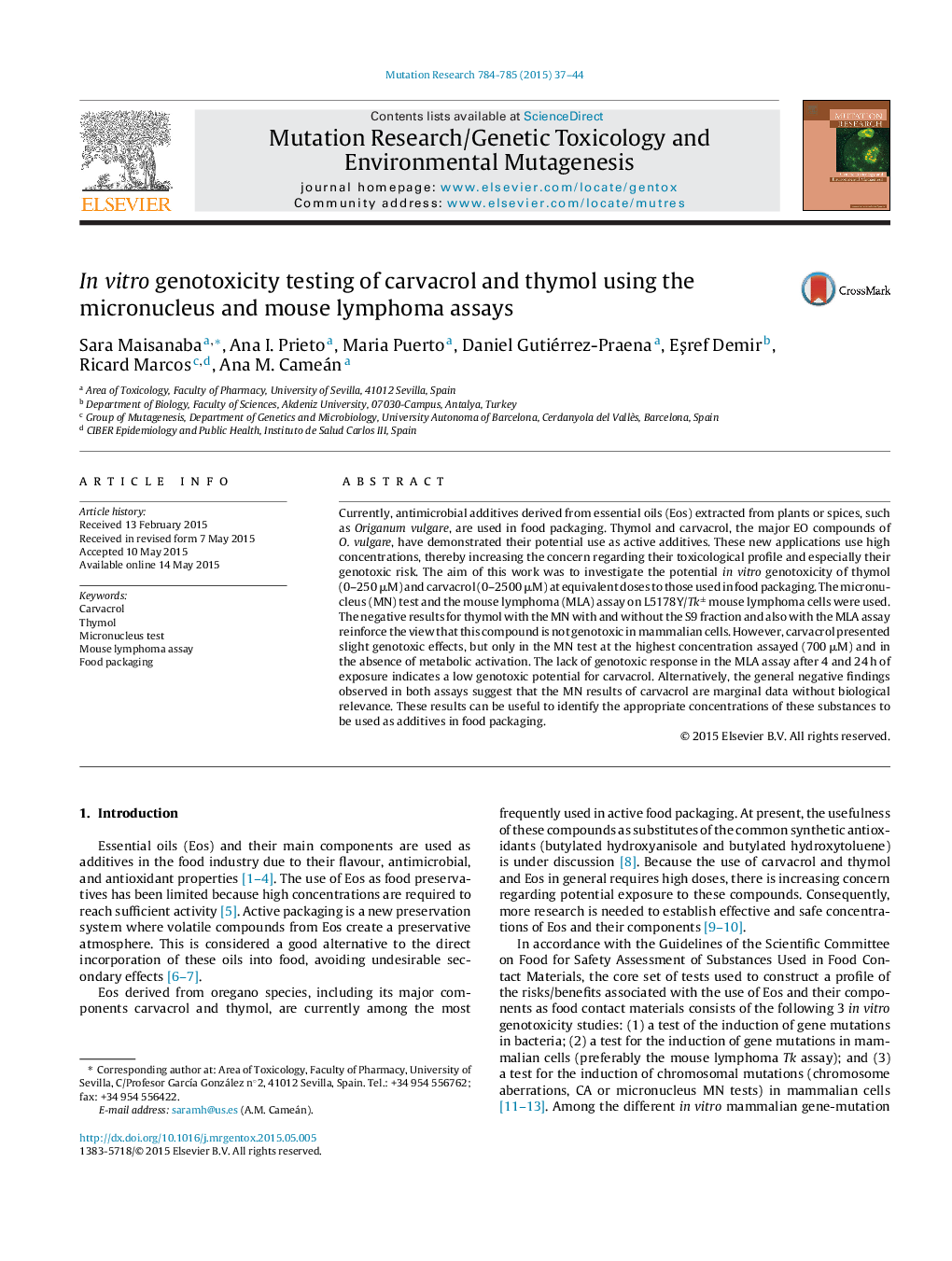| کد مقاله | کد نشریه | سال انتشار | مقاله انگلیسی | نسخه تمام متن |
|---|---|---|---|---|
| 2147855 | 1548579 | 2015 | 8 صفحه PDF | دانلود رایگان |

• Interest of carvacrol and thymol for the development of new active packaging
• Carvacrol induces micronucleus at the highest concentration assayed in L5178Y cells
• MLA assay did not show genotoxic response by any of both compounds
Currently, antimicrobial additives derived from essential oils (Eos) extracted from plants or spices, such as Origanum vulgare, are used in food packaging. Thymol and carvacrol, the major EO compounds of O. vulgare, have demonstrated their potential use as active additives. These new applications use high concentrations, thereby increasing the concern regarding their toxicological profile and especially their genotoxic risk. The aim of this work was to investigate the potential in vitro genotoxicity of thymol (0–250 μM) and carvacrol (0–2500 μM) at equivalent doses to those used in food packaging. The micronucleus (MN) test and the mouse lymphoma (MLA) assay on L5178Y/Tk± mouse lymphoma cells were used. The negative results for thymol with the MN with and without the S9 fraction and also with the MLA assay reinforce the view that this compound is not genotoxic in mammalian cells. However, carvacrol presented slight genotoxic effects, but only in the MN test at the highest concentration assayed (700 μM) and in the absence of metabolic activation. The lack of genotoxic response in the MLA assay after 4 and 24 h of exposure indicates a low genotoxic potential for carvacrol. Alternatively, the general negative findings observed in both assays suggest that the MN results of carvacrol are marginal data without biological relevance. These results can be useful to identify the appropriate concentrations of these substances to be used as additives in food packaging.
Journal: Mutation Research/Genetic Toxicology and Environmental Mutagenesis - Volumes 784–785, June 2015, Pages 37–44